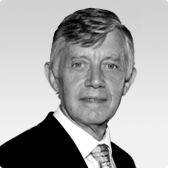By Graeme Colley

Are you one of those who leaves things to the last minute and ends up in a mad panic? Ditto with lodging your SMSF annual return? If so, read on, as FY 2016/17 includes a few twists and turns which you should factor in to avoid late lodgement.
The super changes from 1 July last year mean that SMSFs members with a pension balance of more than $1.6 million may need to consider reducing any excess, resetting CGT cost bases and getting actuarial certificates. This is in addition to the usual issues such as calculating taxable income and what expenses are deductible for the SMSF.
With all these changes, thank goodness the ATO has allowed an extension to lodge returns by 2 July.
If you have a total balance of more than $1.6 million in pension phase as at 30 June 2017 in all of your super funds, you should have done something and reduced it to no more than $1.6 million by 1 July 2017, otherwise a penalty will apply. The excess can be either transferred to accumulation phase or withdrawn as a lump sum. For anyone in receipt of a defined benefit pension with a value of more than $1.6 million, or a combination of defined benefit and account based pension over that amount, an adjustment of all account-based pensions will be required. Any adjustment for these purposes can allow access to CGT relief but there are exceptions.
Where a pensioner has reduced the balance of their account-based pension to meet the $1.6m cap, or they are in receipt of a transition to retirement pension (TRIS), they may have access to the transitional CGT cost base reset. The reset allows a fund to notionally sell the CGT asset at its market price and immediately notionally acquire it to reset the cost base for CGT purposes. The operation of the reset depends on whether the fund calculates its exempt and taxable income on a segregated or proportional basis. If the segregated basis is used it is possible for the CGT asset to reset its cost base between 9 November 2016 and 30 June 2017, but if the proportional basis is used the market value on 30 June 2017 applies to reset the cost base.
Why would you reset the CGT cost base of the fund? The answer lies in the potential tax benefits. It’s not compulsory to reset if you qualify and sometimes, it may be better not to. Don’t forget the reset is available only if the amount you have in pension phase on 30 June 2017 is more than $1.6 million or you were receiving a TRIS at that time.
If you decide to reset the CGT cost base of an asset, an election must be made and information is required about the amount of the reset that is deferred at sections 8F and 8G of the fund’s Capital Gains Tax Schedule. Once the election is made it’s irrevocable which means it’s set in concrete.
In some circumstances an SMSF will be required to obtain an actuarial certificate. The certificate is required if, at sometime during the 2016/17 financial year, the fund calculated its exempt pension income on a proportional basis. An actuarial certificate is not required if the fund used the segregated basis or the fund was wholly in pension phase throughout the financial year. For the 2017/18 financial year an actuarial certificate will also be required for all SMSFs where at least one fund member has a total superannuation balance of at least $1.6 million as at 30 June in the previous financial year.
Keeping track of contributions is something trustees need to do. You should classify all contributions on the basis of their taxation and preservation status. If you decide to claim a tax deduction for personal contributions you will need to complete an election. It needs to be given to the fund when your tax return is lodged with the ATO, or by the end of the financial year after the contribution has been made, whenever is the latter. Trustees will be required to acknowledge receipt of the election.
Deductions for expenses paid by SMSFs depend on a number of situations depending on whether the expense has been incurred in gaining the fund’s assessable income. This means that any expenses that relate to exempt current pension income are not deductible, as they are incurred in gaining the exempt income of the fund. A fund that has accumulation and pension members will apportion expenses between those that are deductible and those that are not. There are some expenses which can be claimed in full, whether they are linked to exempt or assessable income of the fund. These expenses include the ATO’s supervisory levy and premiums for death and disability cover.
So, if you haven’t got to work on this year’s SMSF return, it’s certainly time to start now in view of the changes to super that have taken place. Don’t forget to make an adjustment if the total of your pension balances are impacted by the transfer balance cap, reset the CGT cost base if appropriate and arrange for an actuarial certificate if required. Then there’s making sure contributions are correctly classified, income is properly accounted for and deductions are correctly classified.